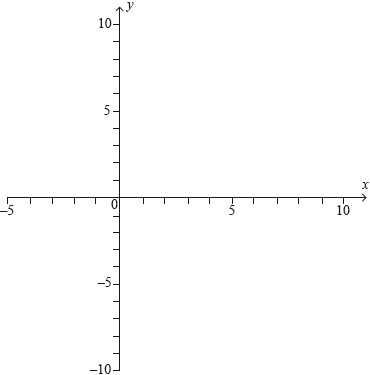| Date | May Specimen paper | Marks available | 5 | Reference code | SPM.2.AHL.TZ0.9 |
| Level | Additional Higher Level | Paper | Paper 2 | Time zone | Time zone 0 |
| Command term | Find | Question number | 9 | Adapted from | N/A |
Question
Consider the graphs of and , .
Find the set of values for such that the two graphs have no intersection points.
Markscheme
METHOD 1
sketching the graph of () M1
the (oblique) asymptote has a gradient equal to 1
and so the maximum value of is 1 R1
consideration of a straight line steeper than the horizontal line joining (−3, 0) and (0, 0) M1
so > 0 R1
hence 0 < ≤ 1 A1
METHOD 2
attempting to eliminate to form a quadratic equation in M1
A1
EITHER
attempting to solve for M1
OR
attempting to solve < 0 ie for M1
THEN
A1
a valid reason to explain why gives no solutions eg if ,
and so 0 < ≤ 1 R1
[5 marks]


